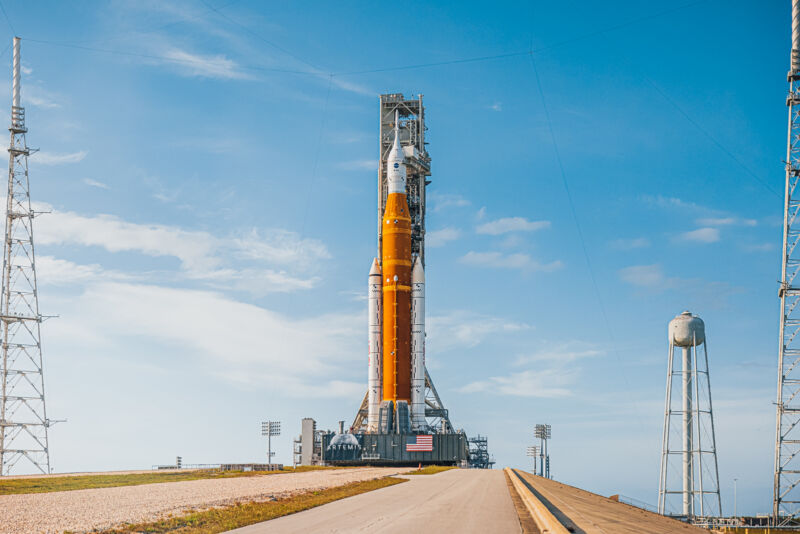

The SLS rocket finally has a believable launch date, and it’s soon
source link: https://arstechnica.com/science/2022/07/nasa-sets-a-late-august-launch-date-for-sls-and-it-may-actually-happen/
Go to the source link to view the article. You can view the picture content, updated content and better typesetting reading experience. If the link is broken, please click the button below to view the snapshot at that time.

Soon Launch System —
The SLS rocket finally has a believable launch date, and it’s soon
The major remaining task? Arming the rocket's flight termination system.
Eric Berger - 7/20/2022, 4:40 PM

NASA officials said Wednesday that the space agency continues to make progress preparing the massive Space Launch System rocket and Orion spacecraft for a launch later this summer. Moreover, they now have enough confidence to set a launch date: August 29.
Under the agency's current plans, the stacked SLS rocket and Orion spacecraft will roll out to its launch site at Kennedy Space Center on August 18. Then, there would be three opportunities—August 29, September 2, and September 5—to launch the vehicle before the window closes.
"These are the dates we are working toward today," said Jim Free, the chief of NASA's human exploration systems development program.
Free added that a launch in less than six weeks would require ongoing preparations to continue smoothly, plus cooperation from the weather along the Florida coast. Late August and early September is a period when tropical activity in the Atlantic Ocean typically nears its crescendo. During a teleconference with reporters, Free and other officials emphasized the uncertainty involved in attempting to launch such a complex vehicle for the first time.
Each of the three launch opportunities would allow for a "long-class" mission for the Orion spacecraft, which will be uncrewed and fly into lunar orbit for several weeks before returning to Earth and splashing down in the Pacific Ocean. The launch times and mission durations are as follows:
- August 29: 8:33 am ET (12:33 UTC), 42 days, October 10 landing
- September 2: 12:48 pm ET (16:48 UTC), 39 days, October 11 landing
- September 5: 5:12 pm ET (21:12 UTC), 42 days, October 17 landing
The Artemis I mission is a test flight to verify the capabilities of the SLS rocket and demonstrate Orion's ability to return from the Moon and survive re-entry into Earth's atmosphere at high velocities. If it goes well, a human flight around the Moon, Artemis II, could follow in 2025.
AdvertisementAt present, the SLS rocket and Orion are inside the Vertical Assembly Building at Kennedy Space Center. As NASA and the SLS rocket's myriad contractors work on final close-out tasks, the main activity left is activating the rocket's flight termination system, which would be commanded to destroy the vehicle if it flies off course after launching. This activity is scheduled to begin on August 11, according to NASA's internal schedule.
Once the flight termination system is activated, NASA has about three weeks to launch the rocket. This is due to the batteries that power the termination system, which must operate independently of the rocket.
This flight termination system can only be serviced inside the Vertical Assembly Building. So if NASA attempts a launch during the August 29 to September 5 period but is unsuccessful due to weather or some other technical issue, the vehicle would have to be rolled back to the assembly building for flight termination work. Effectively, this means that if the vehicle tried to launch on or before September 5 and is unsuccessful, the next launch attempt probably would not come until October.
While the August 29 launch date is not firm, we can have far more confidence in it than any previous launch windows NASA has set for the Artemis I mission. All of the major prelaunch tests have been completed, and the vehicle is technically ready to fly. The next major decision point will come in mid-August, when NASA makes the decision to roll the booster to the pad. After that, the agency is tentatively planning to hold a Flight Readiness Review on August 22, when NASA leaders would make the "go" or "no-go" decision on whether to formally proceed with the launch.
Finally, this big rocket is probably going to fly.
Recommend
About Joyk
Aggregate valuable and interesting links.
Joyk means Joy of geeK